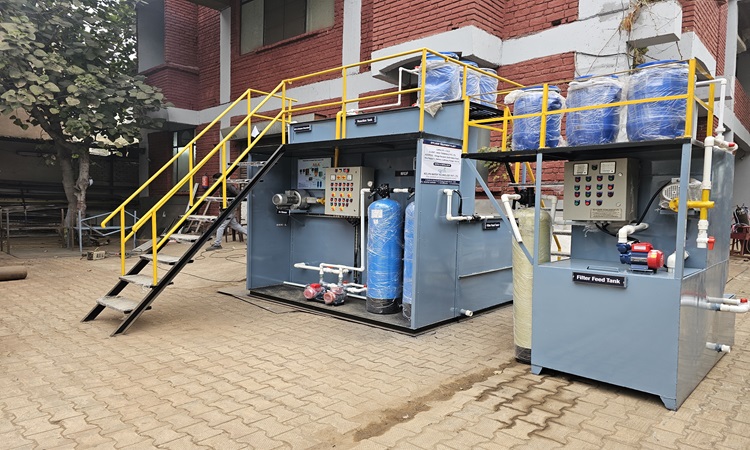
Sewage management has become a critical challenge in today’s urbanized and industrialized world. With increasing population, rapid urban growth, and rising industrial activities, the generation of sewage has multiplied. Discharging untreated sewage into rivers, lakes, or land can cause environmental degradation, waterborne diseases, and severe damage to ecosystems. To address this challenge, a Sewage Treatment Plant (STP) is designed to treat and purify wastewater before it is released back into the environment or reused for non-potable purposes.
A sewage treatment plant is not just a facility—it is a technological solution that ensures sustainability, environmental protection, and public health. This article provides a comprehensive overview of sewage treatment plants, their working, processes, technologies, and applications.
What is a Sewage Treatment Plant?
A sewage treatment plant (STP) is a system used to remove contaminants from wastewater, primarily from household sewage, commercial complexes, and industrial establishments. It is designed to treat both organic and inorganic matter, ensuring that the discharged water meets environmental and regulatory standards.
Sewage usually contains suspended solids, organic matter, pathogens, oils, detergents, and chemicals. If untreated, it can pollute water bodies, harm aquatic life, and contaminate groundwater. An STP removes these harmful elements using a combination of physical, chemical, and biological processes.
Objectives of a Sewage Treatment Plant
- Reduce Pollution Load – Removing harmful contaminants from wastewater.
- Protect Public Health – Preventing the spread of waterborne diseases.
- Environmental Sustainability – Ensuring cleaner water discharge into natural resources.
- Water Reuse – Treated water can be reused for gardening, flushing, cooling towers, or construction.
- Compliance with Regulations – Meeting the discharge standards set by pollution control boards.
Stages of Sewage Treatment
The treatment process in an STP can be broadly divided into three main stages:
- Primary Treatment (Physical Process)
- Wastewater first enters through screening chambers where large particles like plastics, rags, and debris are removed.
- Grit chambers separate sand, gravel, and heavy inorganic solids.
- Sedimentation tanks allow suspended solids to settle down as sludge.
- This stage mainly removes floating and settleable solids.
- Secondary Treatment (Biological Process)
- The focus here is on breaking down dissolved and organic matter.
- Microorganisms (bacteria) consume organic pollutants in the sewage.
- Common technologies include:
- Activated Sludge Process (ASP)
- Moving Bed Biofilm Reactor (MBBR)
- Sequential Batch Reactor (SBR)
- Membrane Bioreactor (MBR)
- Tertiary Treatment (Advanced Process)
- Final polishing of water to make it safe for discharge or reuse.
- Techniques include sand filtration, ultrafiltration, activated carbon, and disinfection using chlorine or UV light.
- This stage ensures removal of pathogens, colour, and remaining suspended solids.
Sludge Treatment
During sewage treatment, sludge (semi-solid waste) is generated. It is treated through thickening, digestion, and dewatering. Treated sludge can be used as manure, converted into biogas, or safely disposed of. Proper sludge management is an integral part of STPs.
Types of Sewage Treatment Plants
Different STP technologies are selected based on sewage characteristics, space availability, and cost:
- Activated Sludge Process (ASP) – Conventional system using aeration and sedimentation.
- Moving Bed Biofilm Reactor (MBBR) – Compact, efficient system with biofilm carriers.
- Sequential Batch Reactor (SBR) – Batch process ideal for fluctuating sewage loads.
- Membrane Bioreactor (MBR) – Advanced technology using membranes for superior treatment.
- Extended Aeration – Low-maintenance system for small communities or residential complexes.
Applications of Sewage Treatment Plants
- Residential Apartments & Housing Societies – To treat domestic sewage and reuse water for flushing or gardening.
- Commercial Complexes & Offices – For eco-friendly operations and regulatory compliance.
- Hospitals & Hotels – To ensure safe disposal and reuse of wastewater.
- Industries – As part of effluent treatment and zero-discharge initiatives.
- Municipal Corporations – Large-scale STPs for cities and towns.
Benefits of Sewage Treatment Plants
- Environmental Protection – Prevents contamination of rivers and groundwater.
- Health & Hygiene – Reduces risks of cholera, typhoid, and other waterborne diseases.
- Water Conservation – Treated sewage can be reused, reducing freshwater demand.
- Regulatory Compliance – Ensures adherence to pollution control norms.
- Resource Recovery – Biogas from sludge can generate energy, reducing plant operating costs.
Kelvin Water Technologies and STP Solutions
Kelvin Water Technologies Pvt. Ltd. is a leading manufacturer and supplier of sewage treatment plants in India. With expertise in designing, manufacturing, and commissioning of STPs, the company provides reliable and cost-effective solutions for residential, commercial, and industrial clients.
Their plants are equipped with modern technologies like MBBR, SBR, and MBR, ensuring high efficiency, compact design, and low operating costs. Kelvin Water Technologies focuses on:
- Sustainable wastewater treatment.
- Customized solutions as per site requirements.
- Ensuring compliance with CPCB (Central Pollution Control Board) norms.
- Offering complete services from design to installation and maintenance.
Conclusion
A Sewage Treatment Plant is an indispensable infrastructure in today’s world. It not only protects the environment and public health but also promotes sustainable water management. With the growing scarcity of freshwater, STPs play a critical role in recycling and reusing water for secondary applications.
Companies like Kelvin Water Technologies are driving innovation in wastewater management by providing efficient and reliable sewage treatment solutions. Investing in a sewage treatment plant is not just about compliance—it is a step towards building a cleaner, greener, and sustainable future.



